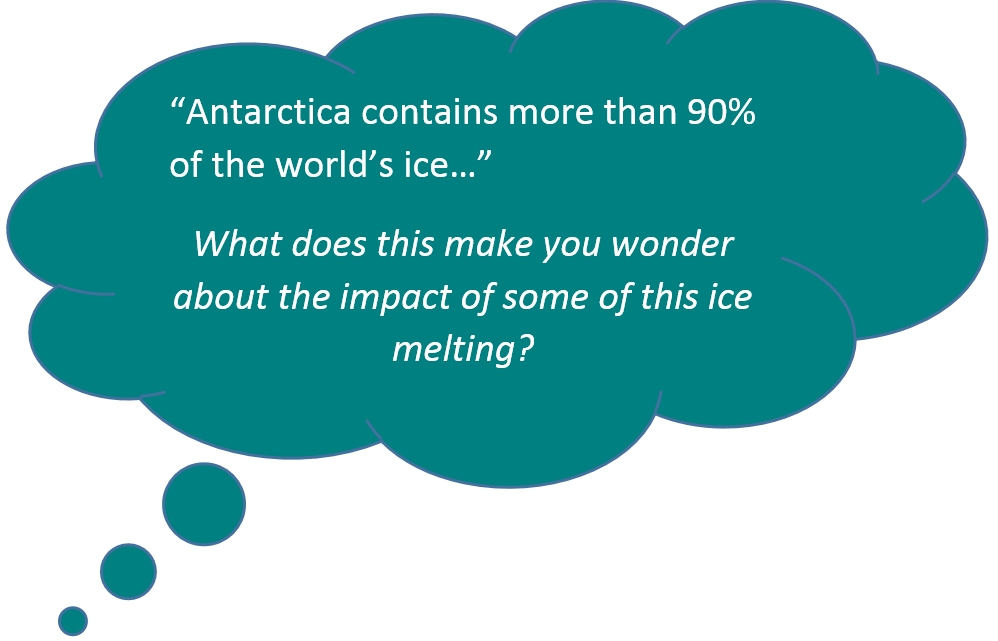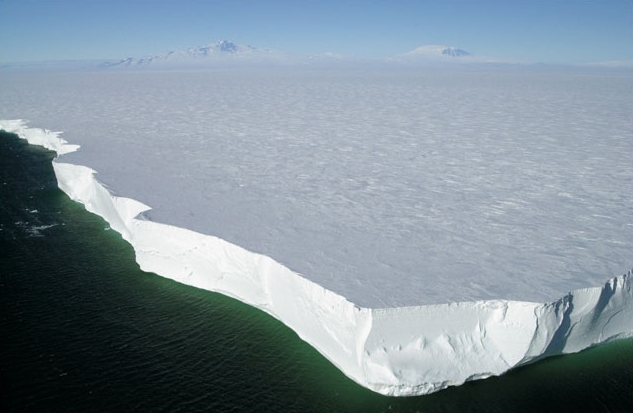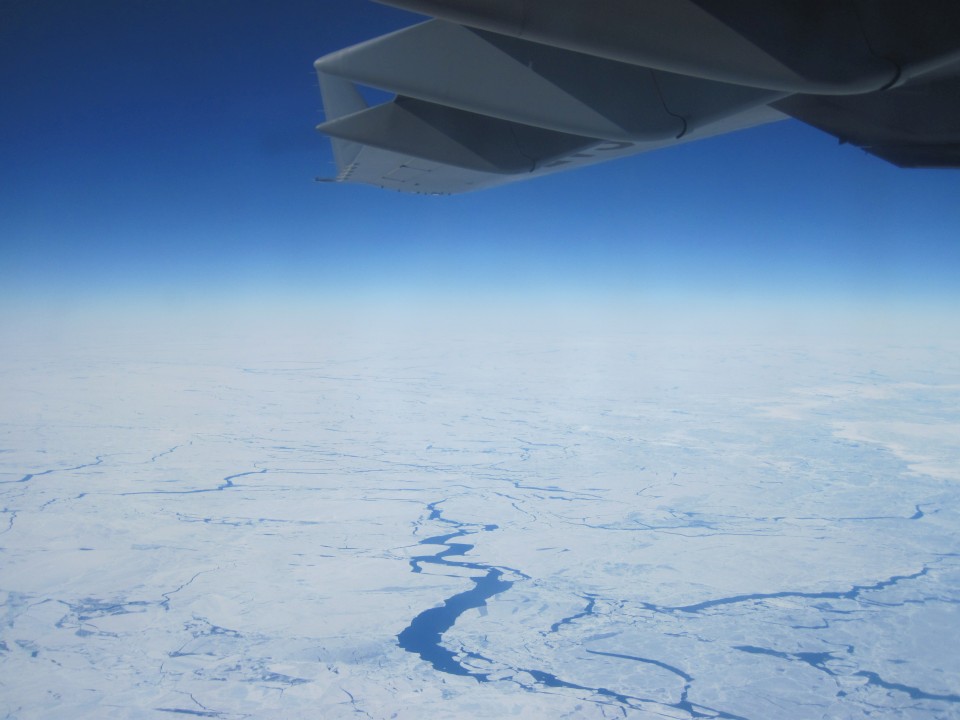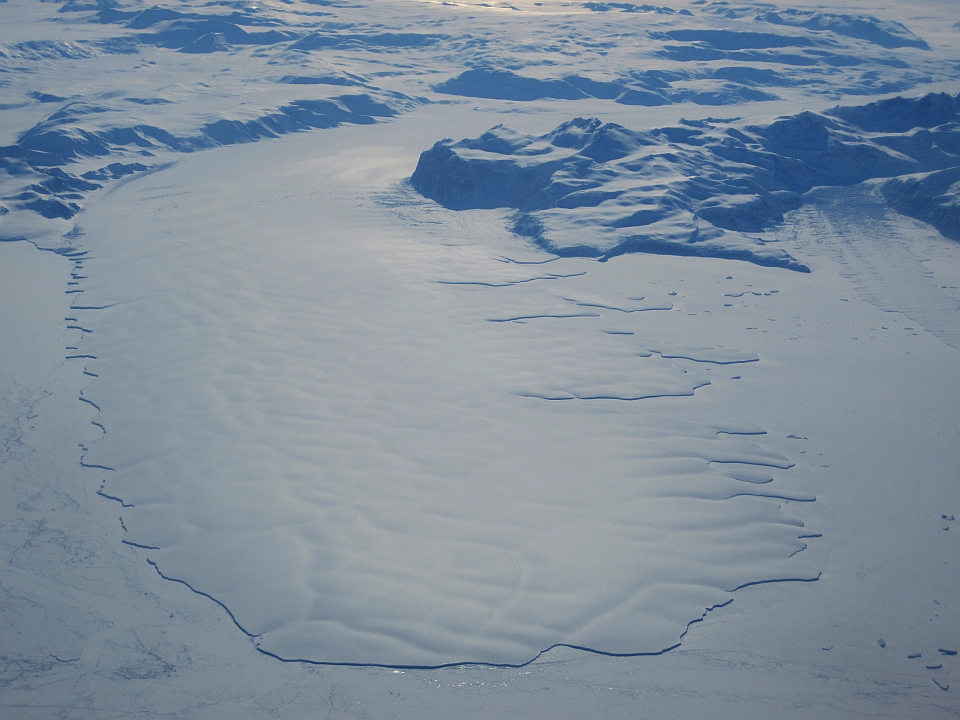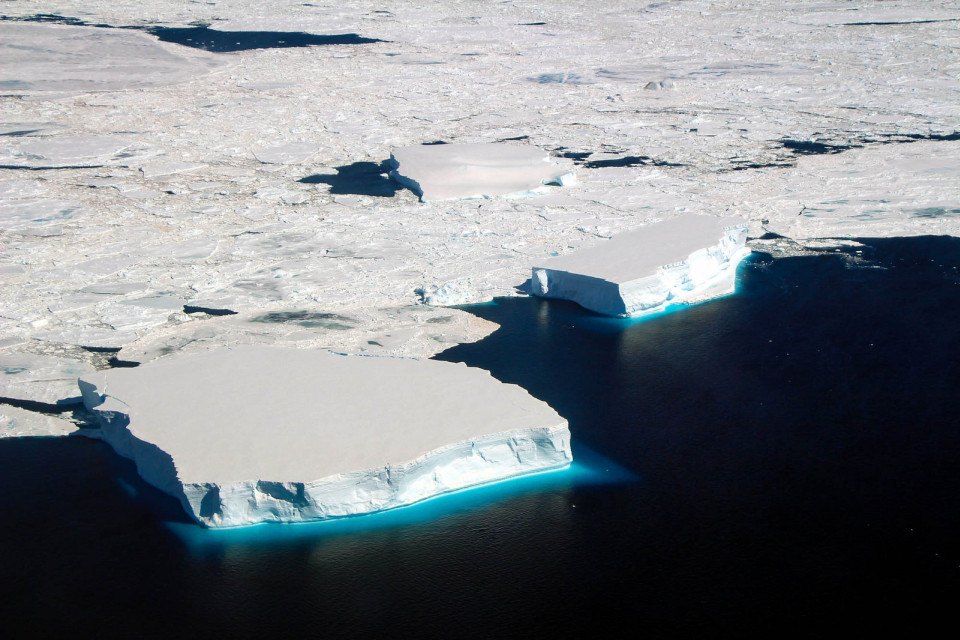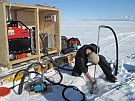Antarctica contains more than 90% of the world’s ice. The ice comes in different forms:
What data might scientists be able to gather from ice and what do you think this data would be used for?
Ice Sheet
The Antarctic ice sheet is a layer of ice on the continent formed from thousands of years of snowfall that has been compressed as new snow has been deposited on top. It is the largest single mass of ice on Earth covering 99% of the continent, an area of 14 million km2, to a maximum depth of 4700m. Around 90% of the Earth’s fresh water is held in the ice sheet.
The Antarctic ice sheet is made up of two sheets that merge into one:
- the East (or Greater) Antarctic ice sheet (EAIS)
- the West (or Lesser) Antarctic ice sheet (WAIS)
Ice Shelf
An ice shelf is a floating extension of the ice sheet formed on land as the sheet flows downhill onto the sea. They are made of fresh water.
How do you think scientists measure the movement of ice?
The Ross Ice Shelf is one of the largest in the world, covering an area nearly twice the size of New Zealand. The Ross Ice Shelf varies in thickness from over 1000m where it is fed by glacial ice from the ice sheet to less than 100m at the ice front.
Sea Ice
Sea ice is formed on the ocean surface when the water temperature falls to –2 degrees Celsius. It still contains some salt (about 1% compared with the 3.5% of sea water). As ice is less dense than water it floats on the surface forming a layer up to several metres thick.
Each winter sea ice forms, although some parts do not melt the following summer. Sea ice begins to form in the Ross Sea in March/April and usually breaks up by mid-summer to leave open water again, except where pockets of fast ice remain in bays and inlets.
Sea ice is not the same as icebergs. Icebergs break off the edges of ice shelves and so are made of fresh water.
Ready for a quiz? Try the 'Ice' interactive activity.

